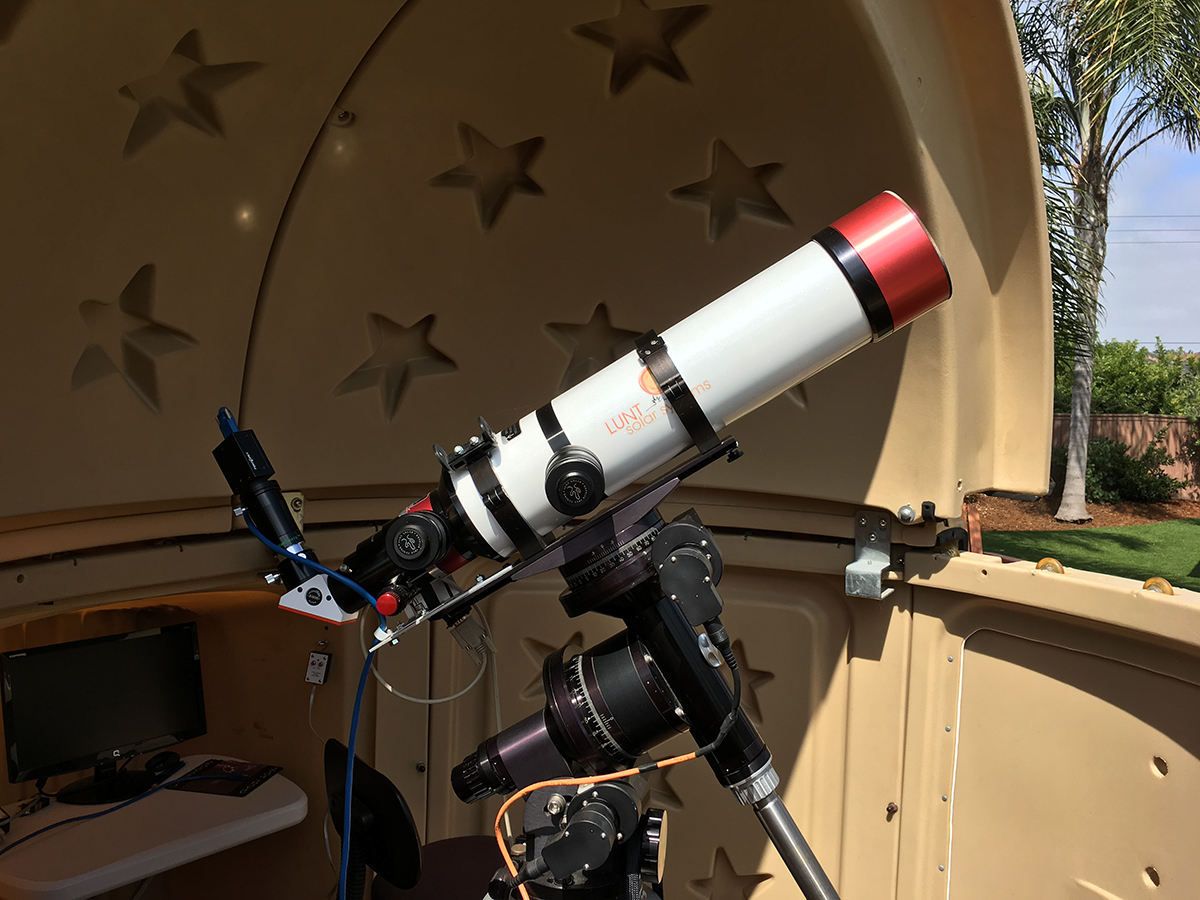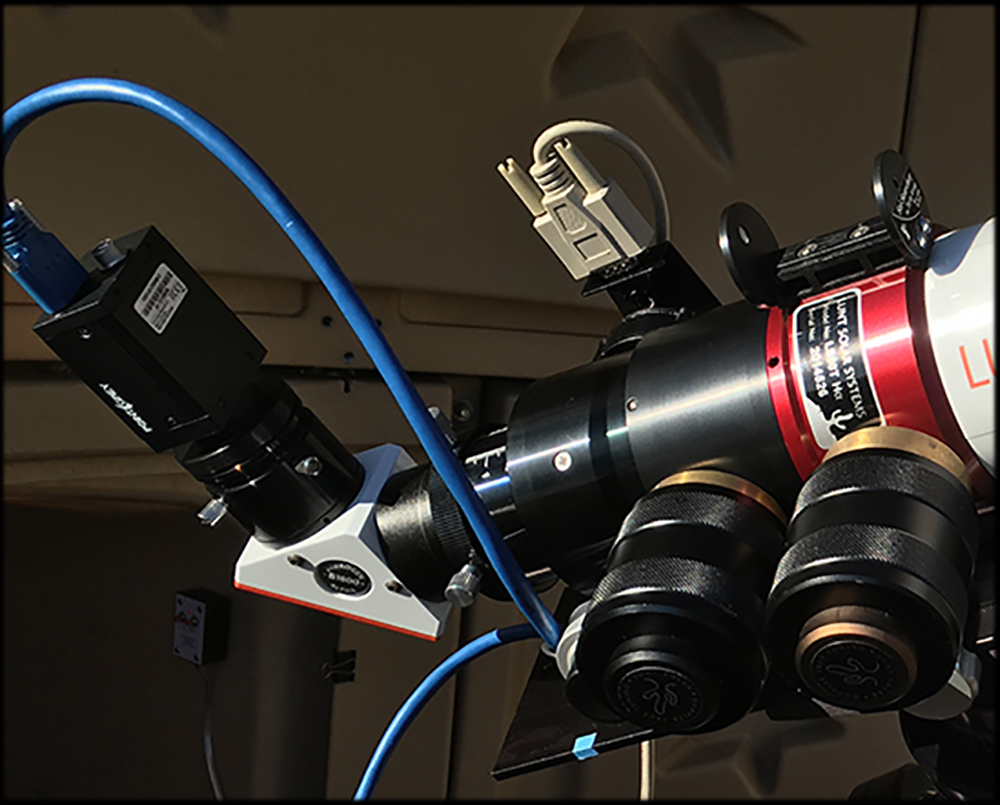About the Images
Equipment: Images of the sun's photosphere and chromosphere were captured using a Lunt 100mm solar telescope,
mostly from the backyard. These scopes are equipped with a hydrogen-alpha filter, passing light with a wavelength centered on 656.28 nm
having a bandwidth of 0.7A. This Lunt 100 telescope is equipped with a DSII double-stack etalon module, narrowing the bandwidth
even further from 0.7A to 0.5A. This increases the details of surface (photospheric) features. Harmful emissions are further blocked by an 18mm blocking filter. A high resolution video camera is used to record dynamic changes in the layers of the sun's photosphere. The current configuration uses an
FLIR Grashopper (USB3)
camera instrumented with an
Sony IMX174 monochrome CMOS chip. Attaching a Tele Vue Powermate 2.5x barlow between the blocking filter and camera increases resolution even further with an effective focal length of 1785 mm.
All images, with the exception of full disk captures, have an image scale of 0.66"/pixel.
Solar H-alpha telescopes are equipped with etalons for tuning the centroid of the narrow band of light
they pass. Tuning the etalon changes the pressure within a sealed
chamber. Changing pressure alters the refraction index of the
light waves passing through the chamber. Controlling the
refraction index allows the sun's broad spectrum light to be "tuned"
around 656.3 nanometers to reveal sunspots, filaments, prominences and
plasma ejections.
The current configuration has two etalon tuners to sharpen the Ha
zone even further.
Data Acquisition: Video images are acquired using frame rates ranging from 42/sec (full frame) to over 150 f/s (for selected regions of interest). Generally, I'll collect
3000-5000 frames per file. A 42 f/s
3000 frame exposure takes 68 seconds. Typical imaging sessions involve collecting 10-15 video files from different regions of the sun over a 1 hr period of time. Conditions and even features can change noticeably over an hour or two, so multiple files are created to capture these changes.
With files approximating
6-8 GB in size, file management and image back-up can be a challenge. Currently using FireCapture v2.4 for data acquisition.
Processing Workflow: Video files are automatically analyzed to select the sharpest subset (usually 10-15%) of frames. These frames are then registered using several
hundred alignment points and stacked to create a single 16-bit image file. Combining many single frames improves S/N. Stacking is done using AutoStakkert
3.0. The image then undergoes sharpening and further processing such as inverting, colorizing, more sharpening, and noise reduction
in Photoshop CS.
|

